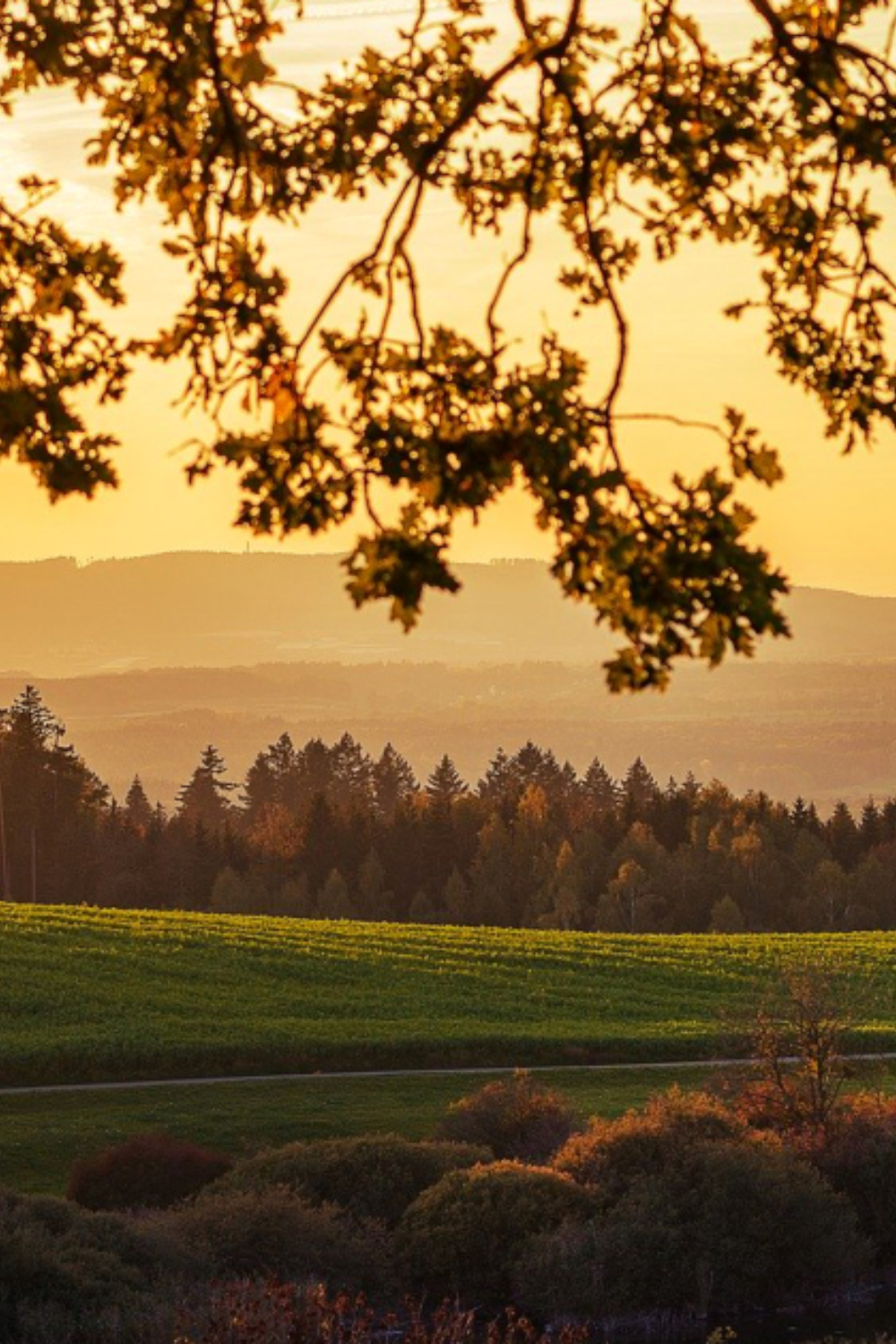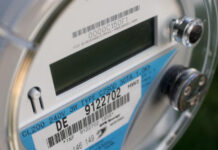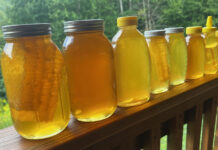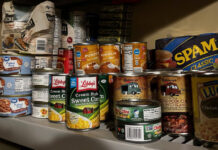
The first day of autumn has arrived, and we have put most of the garden to rest. The last of the misshapen zucchinis were fed to the chickens, the plant itself was hacked to pieces with a machete, dug up, and tossed into the compost pile where it joined the cucumbers, peas, beans and other vines that have been pulled up over the past weeks. Only the peppers remain as we hope the sun coaxes a few more of the green peppers to turn red.
Once we give up on the peppers, I will take the straw from the chicken coop—where it has become impregnated with chicken poop—and pile it onto the raised beds. This gives the material another seven or eight months to compost and decay in place. Since the dirt in our beds seems to sink every year as its organic components decompose, four to six inches of straw and chicken manure will help replenish it. Next spring, we’ll fork whatever is left around, working it into the bed before we plant.
The quality of soil in our raised beds was demonstrated when my wife planted herbs and flowers in them. They grew much better than the same plants did when planted in our local dirt, even when she improved it with soil amendments. Raised beds get a big “recommended” in my book. You can, of course, improve soil in gardens and for row crops, but it takes truckloads of compost and several years of work. Raised beds are a shortcut.
Bees
The bees continue to fly and there are goldenrod and asters upon which they can feed. This doesn’t stop them from drinking the 2-to-1 feed I make, pouring 25-pounds of sugar into one-and-a-half gallons of water and stirring it over heat until it dissolves.
I am currently treating five of the seven hives for mites, using ApiGuard. (The other two had no mites when tested.) It is an easy application, less trouble than the strips I have used in the past. This coming weekend I have to remove the first treatment and replace it with a second.
As of last week, the hives were healthy with a surprising amount of capped brood. However, that many bees require large food resources, and when it rains or grows cold, they eat the honey because they cannot forage. I will feed them again before the rain from hurricane Helene progresses this far north. That way, they can eat without tapping into their stored winter reserves.
If all goes according to plan, the sugar water I am feeding will help them fill the empty spaces in their hives with honey that they can eat all winter.
Honey and Egg Sales
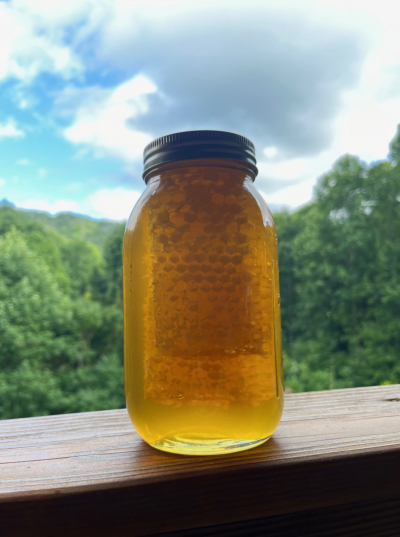
I sold eight quart jars with two slabs of honeycomb surrounded by liquid honey to a Mexican grocery store in a nearby town. The proprietor wanted what we call “chunk honey,” which is honey with comb in it, because it is more familiar to his customer base, many of whom are from Mexico and Guatemala. He told me the Guatemalan population in the Appalachians has grown significantly since 2021, when the caravans started to come across the border. All I can say is they must keep a low profile because I don’t see anywhere as many Hispanics here as when I lived in the South.
This sale pushed us into the black. At least until I buy more chicken feed or sugar.
One of our customers bought our last six dozen eggs a week ago because she was hosting lots of family members over the weekend. We were down to three eggs in our fridge, but then we harvested 18 the next day and breathed a sigh of relief. Within five days, my wife was running out of space in the refrigerator again, but we’ve sold four dozen already this week, so things are returning to normal.
Happiness on the Homestead
While the world may look like it is going to hell in a handbasket, things are going well here. Our children and their children are also doing well.
Many friends have experienced another round of COVID, but we have remained healthy. It ran through a local church, with most of the congregation falling ill and a few elderly folk requiring hospitalization. (Boy, are the members pissed at the woman who everyone believes was their typhoid Mary.)
One of my volunteer duties is drawing to an end, and I admit I am relieved to pass that responsibility on to someone else.
The NFL is back on TV, and thanks to my VPN, I can indulge myself and watch my favorite team on our standard streaming service without paying for the expensive package. My team even has a winning record.
Solar Power Problem
The only fly in the ointment is half of our solar panels stopped working. I reached out to the manufacturer, who looked at the system online and said one of our strings was down, likely disconnected, and to call our installer. It took three tries before they booked a service call, but after failing to diagnose and fix the problem remotely, and after I convinced them it was not because of shade, they are expected out here within the week.
One customer service rep asked if we had squirrels, because they can chew through the wires. We don’t, but it seems like that is something they should ask before you install a system. They will come out in person and take a look. My bet is on installer error. I can’t see how anything would fail in less than 90 days unless they screwed something up.
It’s a two-hour trip out here, so I don’t think the installer is thrilled to make the drive to tighten up a potentially loose connection. My feeling is, you knew where we were located when you accepted the job. Now shut up and fix it.
In a SHTF scenario, I would climb up there and try to diagnose it and fix it myself. But since we are dealing with a DC cable that might carry up to 500 volts if the sun is shining, I am just as happy to let someone else do it.
Lessons Learned
This lack of solar power has made me glad we stayed connected to the grid. If not, we’d either be running the generator every other day or aggressively conserving power. But since the grid is our backup, we just buy power from the utility like we did before the system was installed.
In the meantime, we are producing 20 kilowatt hours (kWh) of power on days we should make 40. I guess we won’t be getting another $1.65 power bill this month.
The other lesson is, had I installed the system myself, I would feel much more capable of diagnosing and fixing the problem. You can bet I am going to be paying attention when the service tech is here in case I have to do so in the future. I am also going to ask them to double check the other string of panels and cables to make sure the same error doesn’t crop up on it in another month or two.
As the residual effects of Hurricane Helene draw closer, I have set my batteries so that they do not drop below 90 percent capacity while the grid is up. This will give us maximum backup if the grid power gets knocked out. We are not in the middle of the projected storm track, but I expect the wind and rain will expand well beyond it, especially to the north and east. We are planning for the worse, just in case. I even went to the library and picked up several books so I can entertain myself if the Internet goes down.
